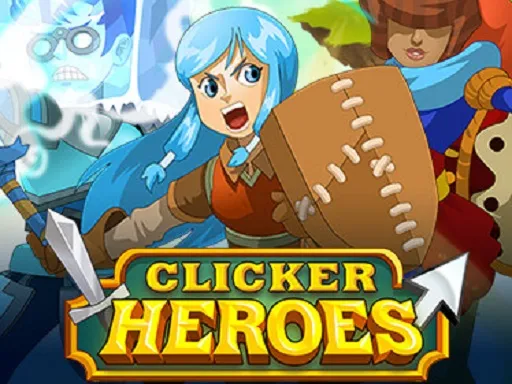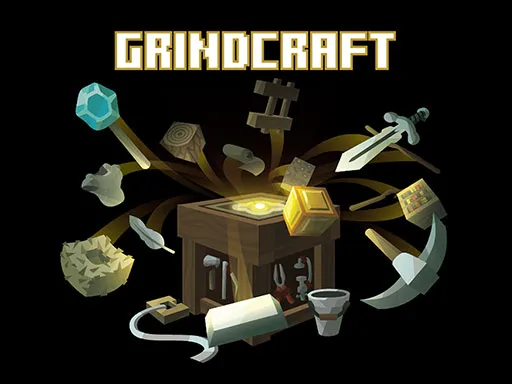Idle Games
10 games in total. Page 1 of 1
Idle Games: The Ultimate Gaming Category for Long-Term Engagement
Explore the immersive world of idle games, a unique category offering long-term engagement with minimal interaction. Discover what makes idle games addictive, how they work, and why they are leading the gaming industry. Idle games, also known as incremental or clicker games, have become a powerhouse in the gaming industry, drawing in millions of players worldwide. These games are specifically designed to offer continuous progression even when you're not actively playing. They are characterized by their simplicity, allowing players to accumulate rewards, currency, or resources over time, whether online or offline. Let's dive deep into the mechanics, monetization strategies, and appeal that make idle games an addictive and innovative genre.The Core of Idle Games
Idle games are built around a simple but highly engaging gameplay loop. At their core, these games allow players to watch their resources—whether it's currency, points, or experience—steadily increase over time with minimal player interaction. This "idle" progression is a primary reason why the genre has seen a steady rise in popularity. Players feel a sense of accomplishment when they check in periodically to find a large stash of rewards waiting for them. The appeal lies in the constant escalation. The more a player engages, the faster their rewards grow. Some games, like Cookie Clicker and Idle Miner Tycoon, feature elaborate upgrades that exponentially increase the player’s earning potential. In these games, watching numbers go up becomes not only satisfying but also highly addictive. The combination of a basic gameplay loop with a complex meta loop, where players can strategically plan long-term goals, keeps them coming back.Complex Meta Loops in Idle Games
While the core loop of an idle game is straightforward, the meta loop adds depth and longevity. In games such as Tap Titans or Idle Factory Tycoon, players can unlock more complex systems as they progress. For instance, they might collect rare in-game items, develop new characters, or enhance existing resources, creating a diverse range of strategies to optimize their play. This secondary loop allows for significant depth and provides a sense of long-term progression. In these games, a major aspect is the prestige system. When the game reaches a point where progression becomes slow, players can reset their progress in exchange for permanent upgrades or special rewards. This reset doesn’t feel like a loss, but rather a tactical step to speed up their next round of progress. This dynamic ensures players remain engaged even when the game becomes repetitive.Monetization Strategies in Idle Games
One of the reasons idle games have gained immense popularity is their clever use of monetization strategies. Many idle games operate on a free-to-play model but generate significant revenue through in-app purchases and rewarded ads. Players can buy boosts, upgrades, or currency to speed up their progression, while watching ads offers smaller but valuable rewards. Monetization in idle games is successful because players often feel a sense of achievement through these purchases, as they can significantly enhance their gaming experience without detracting from the free version. In addition, rewarded video ads have become a popular format in idle games. This approach allows players to choose when they engage with ads in exchange for in-game rewards. For example, watching a 30-second ad could provide a currency boost or temporarily increase the speed of resource accumulation. This keeps the balance between monetization and user satisfaction.Player Retention and Engagement
One of the standout features of idle games is their high retention rates. Unlike hyper-casual games that rely on short, intense bursts of gameplay, idle games are designed for long-term engagement. Players are encouraged to check back frequently to collect rewards and make progress. This low-pressure approach is particularly appealing to a broad audience, from casual gamers to more dedicated players looking for a strategic challenge. The psychological appeal of idle games lies in the concept of progression without effort. Even when players aren’t actively engaging with the game, they are still making progress, which fosters a sense of accomplishment. Games like Idle Heroes or AdVenture Capitalist allow players to return after several hours or even days to find significant progress, making them feel as though their efforts have paid off. The combination of this passive progression with moments of active gameplay creates a perfect balance that keeps players engaged for extended periods.Evolving Trends in Idle Games
The idle game genre has come a long way since its inception. What started as simple clicker games has evolved into a category that incorporates complex systems, including elements from role-playing games (RPGs), simulations, and even strategy games. Idle RPGs, for instance, allow players to manage characters, upgrade skills, and explore new areas, all while maintaining the traditional hands-off approach that defines the genre. The genre has also embraced cross-platform play, with many idle games available on mobile, browser, and even consoles. This has broadened the audience and made idle games more accessible than ever. In fact, the growing popularity of idle games can be attributed to their ease of play on mobile devices, where players can check in periodically during their day to manage progress. The rise of hybrid casual games—games that blend the simplicity of idle mechanics with more complex gameplay—has further solidified the genre’s place in the gaming world.The Future of Idle Games
The future of idle games looks promising, with developers continuing to innovate and find new ways to engage players. One of the key areas of growth is in the incorporation of social features. Some idle games are beginning to introduce multiplayer elements, allowing players to collaborate or compete with friends, which adds a new layer of depth to the genre. Moreover, developers are exploring new ways to integrate seasonal events and limited-time challenges into idle games, creating incentives for players to return frequently. These events often offer exclusive rewards or special upgrades that are not available through regular gameplay, which adds excitement and urgency. Another trend is the growing use of data analytics to fine-tune player experiences. By analyzing how players interact with the game, developers can adjust difficulty curves, reward systems, and monetization strategies to optimize engagement and retention. This data-driven approach ensures that idle games continue to evolve and provide players with a satisfying, long-term experience. Idle games represent a unique and engaging category in the gaming industry. With their easy-to-learn mechanics, deep progression systems, and clever monetization strategies, they have captured the attention of players around the world. As developers continue to push the boundaries of what idle games can offer, the genre is set to remain a staple of the gaming landscape for years to come.PunyGame © 2022. All rights reserved.









